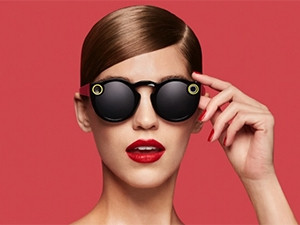
Five-year-old ephemeral messaging app Snapchat plans to capitalise on growing mobile advertising spend targeted at its largest demographic: 18- to 24-year-olds.
Snapchat parent-company Snap yesterday published its initial public offering (IPO) registration document, which shows it seeks an evaluation of $25 billion. The official filing documents reveal how it plans to make money to cover revenue loss.
The document begins by explaining Snap is a camera company - differentiating itself from its subsidiary social media network Snapchat - and claims it will reinvent the camera to improve the way people live and communicate.
Snapchat is the company's main product, with over 150 million people using it daily, and over 2.5 billion Snaps created every day. The revenue sources currently revolve around features found with the mobile-only app.
Snap notes worldwide advertising spend is expected to grow to $767 billion in 2020 and mobile advertising is the fastest growing segment.
"We believe that one of the major factors driving this growth is the shift of people's attention from their televisions to their mobile phones. This trend is particularly pronounced among the younger demographic, where our daily active users tend to be concentrated.
"Advertising is more effective and less wasteful when paired with the right contextual understanding. Smartphones can achieve this because they are personal in a way that other forms of media will never be - we eat, sleep and poop with our smartphones every day," says Snap.
Last year, the company recorded revenue of $404.5 million, up six times from the previous year's $58.7 million. However, it incurred a net loss of $514.6 million for 2016 and $372.9 million for 2015.
The company will have to ramp up its earnings and curb spending to prove profitable in the coming years, and outlined its plans to do so.
Lenses
Snapchat provides a series of free face-altering augmented-reality filters to its users every day. It used to charge users for these but found consumers unwilling to pay and use of the feature plummeted.
Now advertisers can sponsor their own filter which will appear in the millions of Snapchat users' apps. If it is enticing enough, Snapchatters will use it and send their picture with the sponsor's branding to their friends or post it on their Stories. For example, Simba Chips may create a filter that gives users a lion mask.
Geo-filters
Geo-filters are graphics overlaid on Snaps that are location-specific; for example, each city has a different set of geo-filters. The company offers sponsored filters which can be targeted geographically by locations ranging from individual buildings to entire countries.
Snapchat says sponsored lenses and geo-filters "benefit our advertising partners because our audience engages with their campaigns during the creative process and makes them an organic part of the Snaps they send to their friends - resulting in higher performance".
Stories
The Snapchat Stories feature, copied by rivals Facebook and Instagram, lets users post pictures and videos that disappear after 24 hours. Snapchat is experimenting with placing adverts in these stories, but states it has to fit the 'fun' and engaging style of the feature.
The company insists all advertising videos in Stories are vertical. At first, advertisers were against this, says Snapchat, as they wanted to repurpose horizontal TV adverts.
These adverts have now been expanded to include interactive capabilities; for example, swiping up to go to an online store.
Discover
The platform also offers the Stories feature to publishers that pay to produce a Snapchat story with all their original content. These stories can be followed by any user and are easily findable. Vogue, National Geographic and CNN are among some of the outlets that use the feature.
"We enter into agreements with many of these partners that allow them to earn a revenue share on advertisements in their Publisher Stories," says Snapchat.
Spectacles
Last year, when Snap differentiated itself from Snapchat, it launched its first piece of hardware - Snapchat Spectacles. These are sunglasses with built-in cameras which capture video from a human perspective and sync with Snapchat.
The specs are only available in the US through vending machines scattered around the country and retail for $130 each.
Share